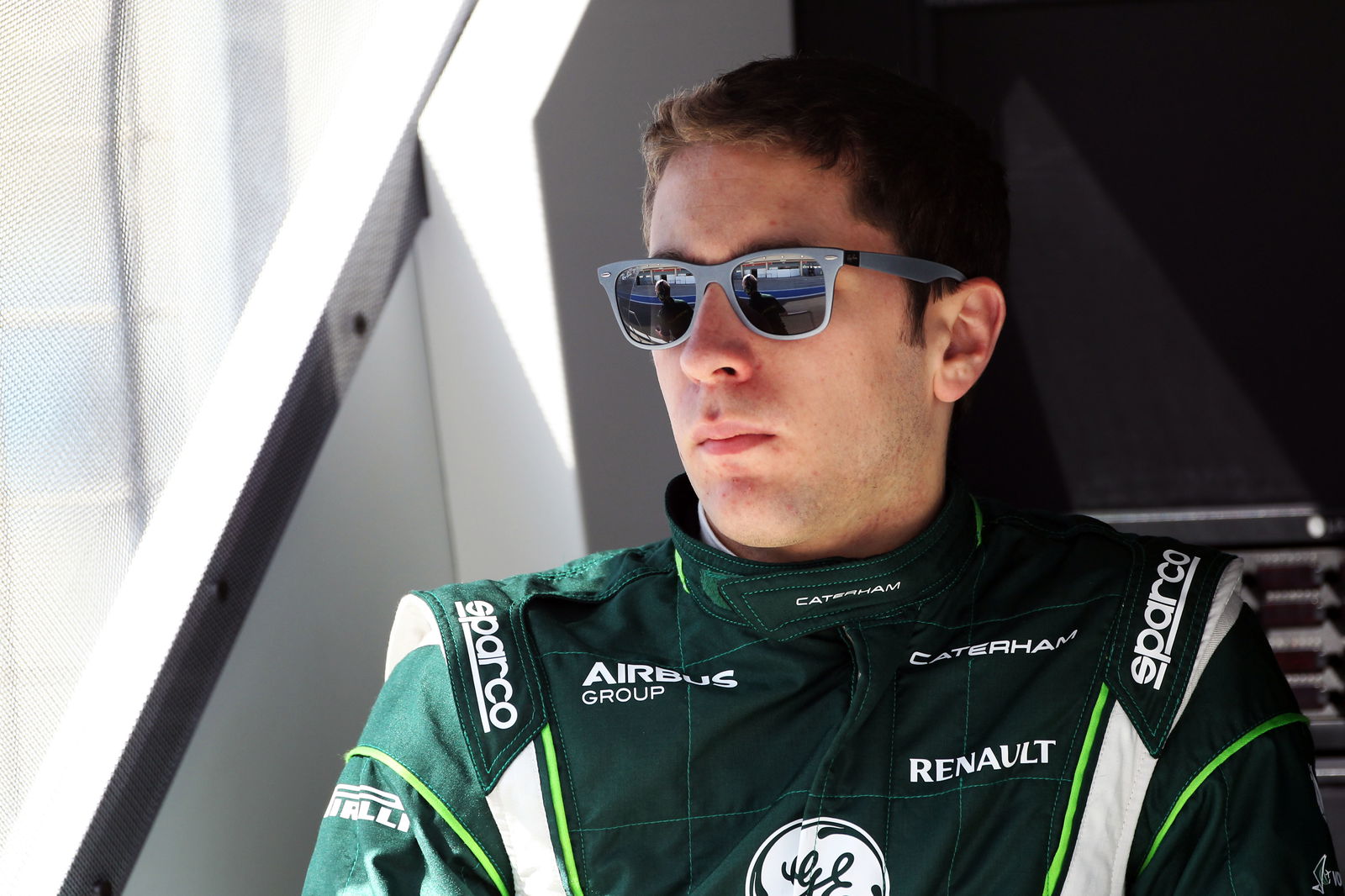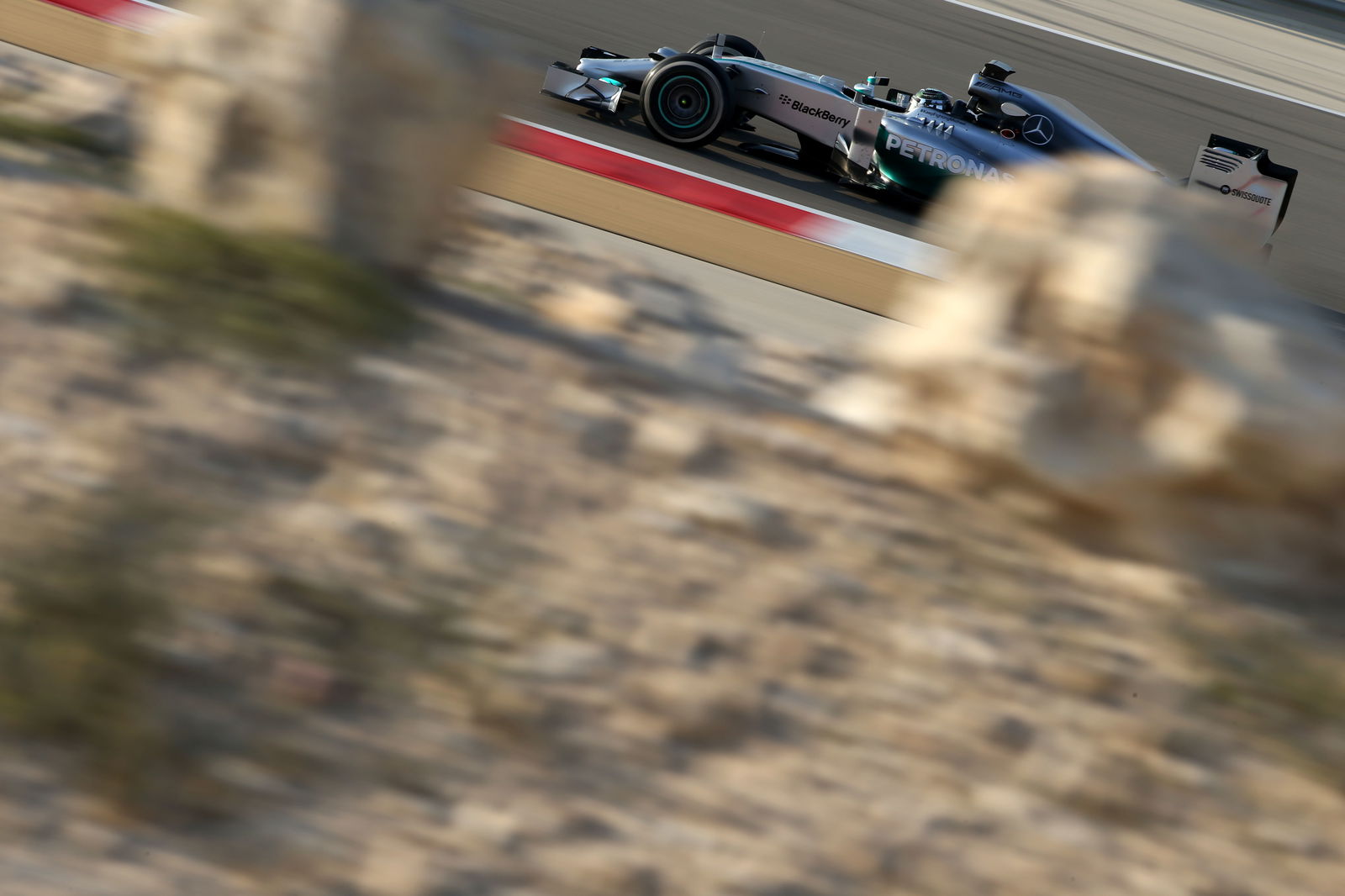In memory of ... Ferrari No.27

With Nico Hulkenberg having chosen 27 as his 'career number' under the new regulations, 2014 will see Formula One's most revered number return to the grid for the first time since 1995.
From Nigel Mansell's 'Red Five' to Damon Hill's zero, Formula One history is awash with classic car, driver and number combinations. None though can match the evocative mystique of the number 27 Ferrari.
Although Alan Jones and Ayrton Senna would both win world titles at the wheel of number 27, it was the white 27 against the Ferrari scarlet that became a racing icon. The first Ferrari no. 27 took to the grid in 1981, with the driver who would become its spiritual embodiment, Gilles Villeneuve, at the wheel. As the 80s and 90s drifted by without a title for the Scuderia, the number 27 became a totem of frustration and unfulfilled ambitions until a change to the rules for 1996 broke the numerical stranglehold, forcing all numbers after 1 and 2 to revert to the team's previous season's constructors' championship standings.
The 223 grands prix of Ferrari number 27 saw only 10 victories, but the spirit established by Gilles Villeneuve was never about pure success. The aura of Ferrari number 27 is a tale of driving by emotion, of outperforming frequently inferior machinery, and of racing on the edge to carry the legacy of Villeneuve for the eternally partisan Tifosi.
With Hulkenberg long-tipped for a Ferrari drive, his choice of number can perhaps be interpreted as a statement of future intent. Whether or not the German ultimately makes the move to Maranello, if Hulkenberg has any inclination towards superstition he would do well to heed the history of the Ferrari no. 27 ahead of the iconic number's return to the fold.
THE BIRTH OF THE 27 LEGEND - GILLES VILLENEUVE
No driver in Ferrari's history aroused the passions of the Tifosi more strongly than Gilles Villeneuve. The diminutive Canadian is one of Formula One's most revered heroes, a man whose achievements never fully expressed his thrilling talent and whose name still represents the heroic qualities that epitomise the very nature of a grand prix driver.
It is the feats of unrivalled skill, bravery and audacity, as well as a penchant for always driving at the absolute visible limit, for which Villeneuve's legacy endures. Villeneuve's inimitable driving style, with the car twitching anthropomorphically under the influence of his trademark car control, was coupled with an innate ability to transcend the limits of his machinery to frequently incomprehensible levels.
Villeneuve's iconic performances share a common audacity; the knowledge that no other driver could have set a time 11 seconds faster than the rest of the field in a wet practice session at Watkins Glen in 1979, of spectacularly fending off Rene Arnoux's Renault in a wheel-banging finish at Dijon the same year, of lapping five seconds faster than anybody else on slicks at a wet Monaco in 1980, or of holding off a stream of faster cars over 50 laps to win at Jarama in 1981.
The memory of Villeneuve is also indelibly linked to his spectacular defiance in the face of adversity, such as his grandstanding three-wheeled recovery to the pits at Zandvoort in 1979, continuing to race despite losing both the front and rear wings in a pile-up at Silverstone in 1981, or driving to a podium finish in the wet at the 1981 Canadian GP with a loose front wing almost completely blocking his view.
Villeneuve may only have competed in 19 races bearing the number 27 on his Ferrari, but in the aftermath of his tragic death during qualifying for the 1982 Belgian GP at Zolder it was the 27 car in which he perished that became the symbol of everything Gilles represented, and the standard by which all future incumbents of the seat would be held up to.
THE BURDEN OF EXPECTATION - PATRICK TAMBAY & MICHELE ALBORETO
A cosmopolitan and popular Frenchman, Patrick Tambay was a close friend of Gilles Villenueve, godfather to his son Jacques, and a deeply personal choice to take over the number 27 drive after Gilles' death.
Four races into his Ferrari career, the substitute became team leader following Didier Pironi's career-ending accident in qualifying for the 1982 German Grand Prix. Tambay responded magnificently, a victory in the very same race and a second place in front of the Tifosi at Monza sealing a full-time drive for 1983.
The legacy of Gilles lived most evocatively at the 1983 San Marino GP, scene of the infamous fallout between Villeneuve and Pironi one year previously. Starting from third on the grid with a Canadian flag painted on his grid markings, Tambay charged to a highly emotional victory.
'Winning for Gilles' would be the high point of Tambay's time at Ferrari though, his championship challenge fading through the 1983 season before he was dropped in favour of Michele Alboreto at the end of the campaign.
The first Italian to race for Ferrari since 1973, Alboreto's five seasons at the wheel of number 27 frequently flattered to deceive, with neither the car nor driver able to establish sufficient success or style to truly capture the Tifosi's affections.
Studious, serious and temperamental, Alboreto was also quick when the mood struck him, as evidenced by his maiden win for Ferrari in 1984, driving the number 27 Ferrari to victory at Zolder on F1's first return to the circuit since Villeneueve's death.
1985 was Alboreto's best year in Formula One, and he offered the only serious threat to Alain Prost's championship. However, Alboreto's early season momentum, built on victories in Canada and Germany, literally went up in smoke as five successive mechanical failures at the year's end curtailed his challenge.
Alboreto was never the same again, and, after being handsomely beaten by new teammate Gerhard Berger in 1987 and 1988, was asked to seek a drive elsewhere for 1989.
IL LEONE - NIGEL MANSELL
Nigel Mansell was famously the last driver to be personally hired by Enzo Ferrari, and his performances in 1989 resurrected the spirit of the number 27 Ferrari.
Dismissed as 'too British to succeed at Ferrari', Mansell was an unflinching tryer and a fierce wheel-to-wheel racer, visibly wringing the car's neck to extract every last ounce of performance. It was this fighting spirit, affirmed with a shock debut win for Ferrari in Brazil, that saw the Tifosi affectionately dub Mansell 'Il Leone'.
A tenacious win in Hungary from 12th on the grid was the year's high point, with Mansell transcending the Ferrari's limits to pass Ayrton Senna's superior McLaren for the win. When the car held together, Mansell was invariably on the podium, but in a year in which Berger suffered 10 consecutive DNFs, reliability frustratingly crippled the Scuderia's challenge.
Joined by defending champion Alain Prost for 1990, Mansell became a literal and figurative number 2, with the number 27 reverting to McLaren and Senna for one year only. Senna subsequently went on to achieve something no Ferrari number 27 driver could, winning the championship.
A YEAR TO FORGET - ALAIN PROST
The stylistic antithesis of Mansell and Villeneuve, Alain Prost was an uncannily smooth operator in the car, and a calculating political presence out of it.
Despite arriving at Ferrari as a triple world champion, and pushing Senna all the way to the 1990 title's infamous conclusion, 1991, Prost's sole season racing the number 27 Ferrari, would be his annus horribilis.
Having manouvered Mansell out of Ferrari, Prost was joined by the inexperienced raw potential of Jean Alesi, and seemed set to finally end Ferrari's championship drought.
One ingredient was missing though: the car. Ferrari hit a downturn at just the wrong moment for Prost; the dismal 642 chassis lumbered with an overweight V12 engine. Prost didn't help himself, famously spinning out on the wet warm-up lap at Imola, and subsequently labelling the updated 643 car 'a truck' at the Japanese GP. By then, the relationship was irretrievable, and Prost was fired before the season-ending Australian GP; a divorce concluded on grounds of unreasonable behaviour.
THE EMOTIONAL LEGACY - JEAN ALESI
The spiritual heir of Villeneuve, Jean Alesi perfectly encapsulated the emotional values of the number 27 Ferrari. A French-Sicilian of decidedly Latin temperament, Alesi was a heartstrong driver with one default setting: all-out attack. Combining his aggression with natural car control, Alesi bore a racecar with such distinction that his driving was a visible form of personal expression - capturing the imaginations of both the Tifosi and legions of fans worldwide.
Driving for Ferrari was the culmination of a lifelong dream, and Alesi famously turned down a drive with Williams to race for the Scuderia alongside Alain Prost in 1991. Inheriting the number 27 from Prost for 1992, Alesi endured the nadir of Ferrari's early-90s slump, but garnished the disappointment with a series of stunning performances.
At Magny-Cours in 1992, Alesi hauled his woefully uncompetitive F92a into contention by daringly staying out on slicks on a wet track in a trademark gesture of defiant car control. At the 1993 Portuguese GP, Alesi brilliantly led the opening stint after a customary lightning start. In the 1995 European and Japanese GPs, Alesi repeated the dry tyres on a wet track trick to haul his car into contention before being denied by Michael Schumacher and transmission failure respectively. Like Villeneuve, much of Alesi's career was fought on the outer margins of performance, pushing the limits in vain attempts to overcome frequently fallible and unreliable machinery.
Of his 79 races for Ferrari, 29, or 37%, ended in mechanical failure. A gearbox failure when leading the 1994 Italian GP from pole pushed Alesi over the edge. An eruption of pent-up frustration saw Alesi, still wearing his overalls, storm from the circuit and into his sportscar, tearing off down the motorway at 160 m/ph and covering the distance from Milan to his Avignon home in just thirty minutes.
At the 1995 Canadian GP, the fates conspired for Alesi to finally catch a lucky break, inheriting the lead when Schumacher hit gearbox trouble. Jean drove the last few laps with tears streaming down his face, splashing his visor every time he hit the brakes, and as he crossed the line the entire paddock lined the pit wall to cheer him home for his sole grand prix victory. It was the final win for Ferrari number 27, and perfectly fitting that it should come on the ?le Notre-Dame, completing the circle around the curves of the Circuit Gilles Villeneuve.
Will Saunders@formulawill

